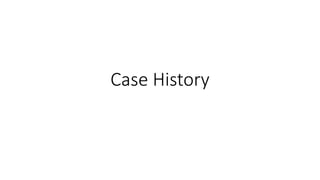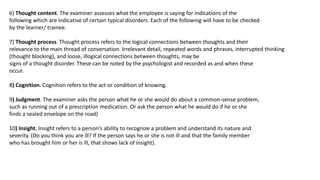The document provides a comprehensive structure for case history collection, including client demographics, family background, educational and work history, and mental status examinations. It outlines specific questions to gather information about the client’s problems, relationships, and overall behavior. Observations about the client's appearance, movement, mood, and cognition are also emphasized to aid in effective assessment.














